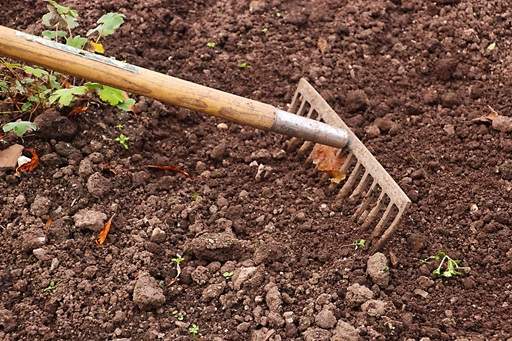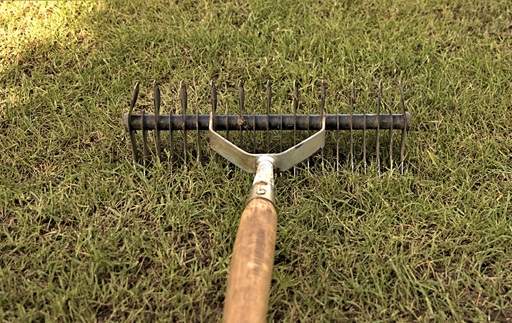Lawn Care - Repair Guide
Dealing with Bare Patches
Drought, regular use, animal abuse and snow/ice in the winter are the most common causes of bare and dead patches in the lawn. Setting the depth on your mower too shallow is another easily avoided cause. Any of these things can leave your lawn looking bare and unsightly, making it the perfect place for weeds to develop and moss to take hold as the weather warms up. Deal with the problem by sowing new grass seed into all bare and patchy sections in spring to rejuvenate the lawn. This can also be done in early autumn, although you run the risk of your grass being damaged by winter snow and ice and then having to potentially re-do sections again in the spring. If repair work must be done during the summer, ensure you water diligently so it has the moisture it needs to thrive.
When re-seeding, start by pricking the surface of the soil with a garden fork to a depth of 1 inch, then rake the soil to form a seed bed, removing any obvious weeds or stones. Scatter grass seed evenly over the area at 25g per square metre and then cover with a thin layer of moist compost or sifted garden soil. Use a hardwearing utility mix containing ryegrass in heavily used areas and always use a shade tolerant grass seed mix in shady areas. Pat down the area with the back of a garden spade and then water every few days if the weather is dry.

We recommend marking out the treated area using string to make sure no-one walks over it until the new grass has established. Also, net the area if you have birds in your garden which are likely to eat the seeds. Grass should sprout seven to 10 days after sowing. Newly seeded areas of lawn should be left un-used until their first mowing. Even if you decide to patch up the bare areas with turf, this should be left completely unused for at least a week. General advice to reduce wear and tear on the same part of your lawn year-on-year is to move children's play areas to different parts of the garden each summer to minimise the stress on the same patch year-on-year. If the damage to your lawn is very severe and you fear it is beyond repair, it's probably best to completely remove what's left of your lawn and start afresh by completely re-seeding or re-turfing again.
Scarifying
Scarifying means using a lawn rake to remove dead grass, thatch and other debris from your lawn that both looks unsightly and prevents health grass growth. As a minimum, scarify at the start of the season in March/April, then again as the leaves fall from the trees in autumn and once again in November. If fallen leaves are a problem in your garden, try to remove them from the lawn as regularly as possible (at least weekly). Do not be tempted to wait until all leaves have fallen to allow you to do a single tidy-up, as this will leave your lawn struggling under a dark, cold blanket of rotting vegetation.
Scarifying should also be done every time you mow your lawn, unless you are using a grass box to collect the clippings. Check for and treat moss infestation before scarifying. If you don’t treat the moss with a suitable lawn moss-killer before raking it out, you may inadvertently spread the spores around the lawn and make the problem worse. Moss is most likely to appear in your lawn after the autumn rains have soaked your soil.

Removing Shade
Shade reduces the quality and rigour of lawn growth, making it more vulnerable to stress and the development of weeds and moss. Where practical, try to cut back branches of trees and reduce the height of hedges to allow the sun to reach all areas of the lawn. If it is not feasible to reduce the shade, we would recommend converting the shaded area of lawn to a bed full of shade-loving plants.
Removing Bumps and Hollows
Uneven ground is a common problem which results in problems because low spots are poorly drained whilst high spots are often scalped by the lawn mower. As this resulted in poor growing conditions for your lawn, we would recommend using a shovel to cutting away areas that are raised and using the soil to fill other areas that are depressed. Depending on the scale of the problem and the size of your garden, this may be a challenging task, but it is worth it in the long run.
Share this page:
